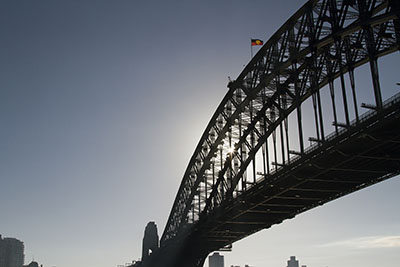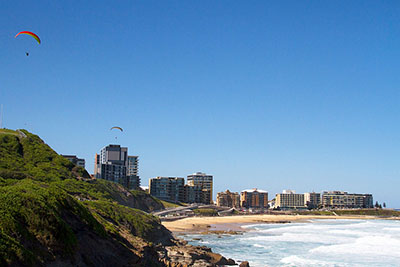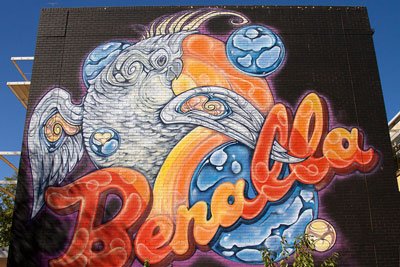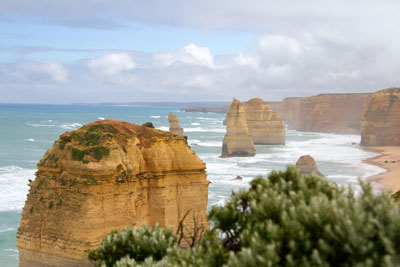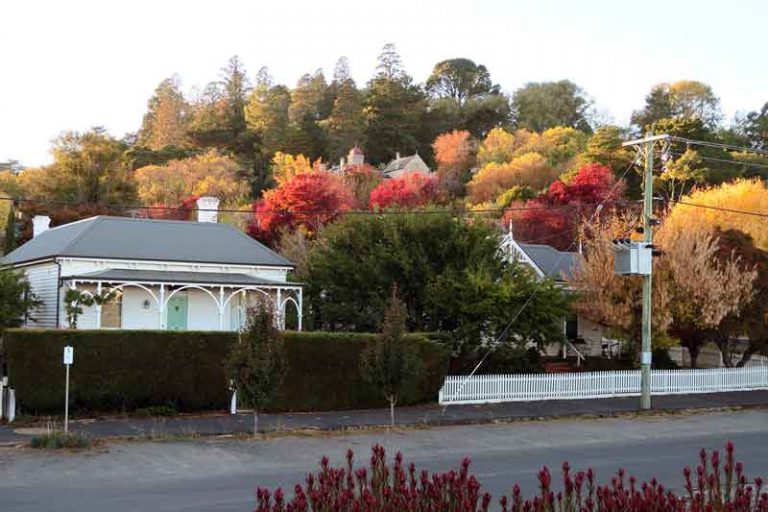Necessary road trip tips for Australia
Heading off on an Australian road trip? Excellent. It’s one of the best ways to experience this massive country and reach far flung places.
Plan the perfect drive with these road trip tips for Australia.

Looking for road trip tips in Australia?
You’ve come to the right place.
Australia is the kind of country that’s just begging to be road tripped.
There’s a certain romance of jumping in the car, hitting the road to stop in small towns, driving through fantastic scenery with the window down, radio playing. Singing. Laughing.
Having fun, I guess.
Plus, public transport between our major cities and states is the pits, so you kinda have no choice (besides flying, but yuck).
There’s many reasons why you should plan a road trip in Australia. Particularly if it’s your first time visiting.
However, there’s definitely some things you should learn before hopping in the car and hitting the road.
Like what time of the day is best for avoiding wildlife. What you should have in your vehicle. And learning some basic road rules would be helpful.
This extensive article is full of road trip tips for Australia, which should ready you for your journey.
Read on to find out more.
Best road trip tips for Australia

Drive on the left
First things first, the most important road trip tip for Australia.
We drive on the left.
My advice? If you’re not used to driving on the left, don’t hire a manual. Your brain may not be able to cope with the backwardness of it all. As someone who loves driving stick, I’m speaking from experience on this!
Instead, get an automatic. You won’t have an issue with this, as most hire cars in Australia are now automatically automatic.
Make sure you have the right licence
You will need an international driver’s permit in Australia. Alongside this, you’ll need the licence issued by the country you live in, which will need to be valid.
If you are planning on driving in Australia, you will generally require:
- a current licence issued in another country that is written in English
- a current licence with an English translation, or an international driver’s licence.
It’s a good idea to also have your passport on hand, should you get pulled over by police.
You may need an international driving permit to rent a car. Check with your intended hire car company before you arrive.
Check the weather before you go
Australia’s weather can be, in a word, erratic.
Keep up to date with the weather forecast before you go on your road trip. Check the Bureau of Meteorology website, or download their app.
Australia is prone to bushfires and flooding in the warmer months. If you’re driving into an area of concern, I strongly recommend reconsidering your plans.
Make sure you get the right car for your trip
Definitely consider where you’re driving to when planning your trip.
Are you mostly sticking to main highways on the east coast, or in Tasmania? You’ll probably be all right with a normal hatchback or sedan.
Heading outback? You’ll want to take something that can handle off-road driving on Australia’s notoriously bad roads.
Talk to your hire car company or if you’re committing to buying a car, research the areas you plan on road tripping through online, before you commit.
Consider a campervan
If you’re backpacking around Australia, you may want to invest in a campervan.
While there’ll be an initial outlay, you’ll save a ton of money on accommodation.
Keep in mind, you can’t just pull over anywhere you fancy in Australia.
However, there are free, or relatively cheap campsites around the country, some which also have facilities.
Check out the WikiCamps app for free campsites along your travels.
Slightly higher market, but still relatively inexpensive are camping and caravan parks. BIG 4 holiday parks are scattered around Australia and have facilities such as electricity and hot showers.
Plus a lot of them are pet friendly, so perfect if you’re travelling with your furriest friend.
Get insured
Stuff goes wrong on the road. A flying rock from a passing road train can crack your windshield.
You may, most unfortunately hit an animal crossing the road. Kangaroos in particular, can do damage.
Prepare for every eventuality with car insurance.
A hire car will come with its own insurance of course, and think long and hard about how much excess you’re willing to pay.
While all cars in Australia legally have to be insured, there’s different levels.
I recommend comprehensive car insurance. It means that you’re covered for most eventualities and you can opt for added extras, such as windshield damage.
Sign up for roadside assistance
Likewise, roadside assistance can be a godsend and is a top road trip tip for Australia.
The last thing you want is a breakdown in the middle of nowhere (which you’ll find yourself in a lot in Australia), with an expensive call out your only option.
Some providers will cover you no matter where you are in Australia. And to be honest, a year long plan is generally really reasonable, costing less than $200.
A price worth paying for peace of mind!
Again with rental cars – this may be included in your plan. If not, additional insurance may be a smart mood.
Bring a spare car key
The most annoying thing you can do while driving is lock your keys in the car, especially if it leads to an expensive call-out, or a smashed window.
I once managed to lock both my keys and my phone in my car. Luckily, an NRMA (roadside assistance in NSW) car was driving past, to which I had a yearly membership. I flagged the driver down and he was able to quickly break into my car. It didn’t cost me a penny as it’s covered by a yearly membership. Lifesaver!
Consider buying a small key safe to discreetly fit onto your vehicle, or keeping a spare key in your wallet, or in the pocket of another person on your trip.
Extra insurance at a small cost.

Put together a rough itinerary
It’s generally a good idea to plot out a plan for where you’re going, and where you’d like to stop along the way.
There’s certainly nothing wrong with taking a detour into a town, or down a scenic drive. But it’s helpful to at least know where you’ll be staying most nights and if possible, having accommodation reserved in advance.
& be mindful of the massive distances in Australia
Australia is kind of unfathomably big. It’s around the same size as China, the USA, Brazil or the entirety of Europe, excluding Russia.
So, it takes a really long time to get just about anywhere. One capital city is around 1000 kilometres to the next and it takes five hours to fly across the country, if that helps give some perspective.
You can miss out on a lot if you plan an ambitious itinerary, rushing from one destination to the next.
My favourite road trips in Australia have not been long drives (well, if you count around 14 hours as ‘short’).
They’ve been standout because I’ll plan time to stop and check out whatever takes my fancy.
If you see a petrol station, take advantage of it!
This is a very important road trip tip for Australia.
Have a half tank full of petrol? Fill up at the next service station (we call them servos).
And if you have a quarter tank, certainly don’t try your luck to make it to the next station. Having to turn back to fill up is both a massive waste of time and money.
If you’re going outback, petrol stations will become far and few between.
It doesn’t hurt to carry extra fuel, in case of an emergency.
Likewise with toilets – you see it, use it
Australia does have an abundance of public toilets. On main highways and freeways, you’ll see rest areas with picnic tables, toilets and sometimes even Driver Reviver carts. These are small food trucks selling food and drink, making them a good place to stop and rest for awhile.
If your bladder has even the smallest of irritations and you see a sign for a toilet in the next five kilometres, stop and relieve yourself.
An important point for people without male genitalia, who can’t just pull over to the side of the road and sling it out, when in desperate need for a pee.
Consider getting a satellite phone
Outside of the major and regional cities, phone reception in Australia is patchy at best and non-existent at worst.
Our national provider Telstra is said to have the best coverage, but even that is tested in remote areas.
A satellite phone will allow you to call for help, no matter where you are. It’s quite an investment, but worth it if you’re going outback.
The number for emergencies in Australia is 000. This will connect you to police, fire or ambulance services.
Or if you don’t want the phone, you could get an EPIRB (Emergency Position-Indicating Radio Beacon). This will alert emergency services to your location and let them know you’re in need of assistance.
Have some form of navigation
No phone reception also means no internet. And no internet means no Google Maps.
It’s a good idea to download your route so you can access it offline. Keep your phone charged while travelling with a portable solar bank – if there’s one thing Australia has an abundance of, it’s sun.
Better yet, invest in a hard copy of a map, such as the Hema Australia Road & Terrain Map. It features Australia’s major road networks, alongside Outback fuel stations and the locations of national parks.
Hema have a range of maps and road guides for destinations around Australia.
Use them in your trip planning and when you get home, you can display them on your bookshelf or coffee table.
Check for tollroads on your route
You have to pay to use some roads in Australia, especially in big cities like Sydney and Melbourne.
If you’ll use toll roads quite a few times during your road trip, you can invest in an e-tag with a running, prepaid account.
If you’re just passing through, buying a pass in advance or up to three days after your trip can save you a lot of money.
Hire cars tend to have e-tags attached to the car and you’ll be required to pay for any tolls used when you bring the car back.
Pack for all seasons
What to pack for a trip in Australia?
It’s a good question. This is a vast continent, with a varied climate.
If you’re pretty much driving top to bottom, I’d recommend packing for warm and cool weather.
A good rain jacket and sturdy boots will go a long way.
It’s obviously cold in the south of the country, but surprisingly cool in the desert at night too in winter.
Better to be prepared.

Bring an esky & picnic blanket
Here’s a good Australian road trip tip.
Save some room in the car for an esky (icebox) and if you’ve room, a picnic rug.
There’s some great gourmet goodies to be found in regional Australia.
You can load up on produce then stop somewhere scenic to have a picnic.
You’ll also see roadside stalls selling produce and flowers as you drive around Oz.
Sometimes the seller is there, but often they’re unmanned, operating on an honesty system.
Carry around a few notes and coins to take advantage of these, whenever they pop up.
Bring water & snacks
This is a very important Australian road trip tip.
Fill up your water bottles and pack lots of snacks. Bring nuts, fruit, chocolate, chips, lollies, sandwiches – doesn’t matter what it is, so long as it’s edible.
Whenever I go on a road trip, I bring a 20L plastic bottle of water, so I can keep myself, my road trip buddy and my dog hydrated.
I also pack my Frank Green water bottle, which is a great size for road trips. Explore other great water bottles for travel.
Pack a first aid kit
Similarly, it doesn’t hurt to have a first aid kit living somewhere in your car.
Even the basics – bandaids, bandages, cold pack and paracetamol can prove handy.
Most are small and compact. If you need it, you’ll be thankful you brought it.
It’s also worth packing some insect repellent and sunscreen. Your skin will thank you!
Make sure you have a spare tyre pumped & ready to go
Punctured tyres are the pits. But they happen, especially when you’re driving on rough roads.
Keep yourself out of trouble by making sure you have a roadworthy spare tyre in your car.
Better yet, learn how to change the spare, so if you run into trouble, you can get yourself out of it.
The ability to change a tyre is an excellent skill to have.

Book in for a car service & get a wheel alignment before a long trip
If you own the car you’ll be travelling in, book it into the mechanic for a service before you depart.
You may also want to make sure your wheels are aligned and safe, before driving.
If you have some basic car knowledge, at least check your oil level and tyre pressure before you go.
And treat yourself to a car wash before your trip, because if you’re spending hours in it, it sure ain’t gonna stay clean.
Pick your travel companions wisely
Your travel companions can make or break any road trip in Australia.
So choose your fellow road trippers well.
If this is someone you don’t think you can get along with for more than a couple of days – don’t drive with them!
Being trapped in a car for days on end with someone you have nothing to say to, is a painful experience.
If possible, share out the driving equally
Likewise, don’t let all the driving fall on one person, if possible.
I’ve been in a situation where I went on a road trip with two 24 years olds, when I was a year older at 25.
I was the only one legally old enough to drive the hire car and so, did all the driving for two weeks. I spent most of the trip burnt out and exhausted, while they became frustrated with me for not wanting to do much of anything.
Driving is tiring and if you can share it out evenly, you’ll all have a much better trip.
Of course if one person wants to do all the driving – then, that’s their prerogative!
Just make sure they have plenty of breaks, so they stay alert and don’t endanger the lives of anyone else in the car.
Stop to rest every couple of hours
The rule to follow when road tripping in Australia is ‘Every two hours: stop, revive, survive’.
This can be as small as pulling over to have a toilet break and stretch your legs.
Or you can stop in a specific destination and have a proper poke around.
Whatever you choose to do, make sure you take regular breaks.
And if you’re too tired to drive, then don’t take the risk.

Be careful on country roads
Country roads in Australia are really not the best.
They weren’t designed for the large amount of traffic they see to begin with.
Recent floods have worsened things, creating massive potholes that sometimes loom out of nowhere.
Regional councils are often poorly funded and state governments will prioritise infrastructure in the larger cities over small country towns.
Plus, people who know the roads well sometimes get a bit, well, speedy. And then frustrated with other drivers who don’t quite go the same speed as them, especially when it’s a one-lane road.
Be mindful of all this and drive at a pace that suits you.
Avoid driving at dawn or dusk
Australia is teeming with wildlife. It’s one of the best things about this country.
And one of the worst things is their tendency to be at their most active at dawn and dusk – which usually involves them crossing roads.
As previously mentioned, some animals like kangaroos can do great damage to themselves, your car and whoever happens to be in it.
Others will simply lose their lives while navigating from point A to B. Drive along any stretch of road in Australia and you’ll see a heckload of roadkill alongside it.
While you run the risk of hitting wildlife no matter what time of the day, avoiding driving at dawn or dusk will reduce your chances of ending a life.
Don’t speed
One top Australian road trip tip is to avoid speeding. For a number of reasons.
The first, is that it’s extremely dangerous.
Australia is also littered with speeding camera, both permanent and mobile.
Fines can be astronomical. So avoid making a donation to the respective government of the state you’re travelling in, by abiding by the rules.
And the final reason is that it’s easier to not hit wildlife if you’re not speeding.
These are all good reasons to keep within the limit!
Don’t drink & drive
Likewise, the penalties for drink driving in Australia are very severe.
You’re not permitted to drive a car if your blood alcohol level is 0.05% or higher.
A probationary or provisional driver must have a blood alcohol level of zero.
Police are regularly out on the roads doing random breath and drug tests, especially on weekend nights. Be smart and be safe.
Brush up on Australian road rules
Some basic rules include:
- seatbelts – you gotta wear them by law
- mobile phones – you can’t use a handheld mobile phone while driving
- pedestrian crossings – drivers must stop at them to allow pedestrians to cross safely.
However – rules can vary from state to state.
Find out more about Australian road rules and how they differ across the country.

Keep an eye out for ‘Big Things’
Onto happier Australian road trip tips.
Because we do things bigger and better in Oz, the country is full of ‘Big Things’ statues.
These can be just about anything. The craze started in South Australia with a ‘Big Scotsman’.
Now there’s big bananas, prawns, potatoes, strawberries and even Ugg boots.
For more, check out our guide to Australian Big Things and plan a few stops on your road trip.
Similarly, there’s a ton of silo art popping up around Australia, which is doing a great job of bringing tourism to underrated regions and small towns.
It’s definitely worth stopping to see some if they’re in your area.
Stretch your legs in small towns
Similarly, get off the beaten path in Australia and check out some of our beautiful small towns.
Many Australian towns have gorgeous architecture, lush parks and gardens, and quirky festivals. Not to mention renowned regional cafes, wineries and restaurants, serving up plates chock full of fresh, local produce.
You may want to drop in to spread the tourist dollar and have a poke around. Or, stay a night or two as a dedicated part of your road trip, to soak up what the town and its surrounding region has to offer.
Here’s some of the best small towns in Australia, Victoria and Tasmania, all worth exploring.
Drive down tourist trails & scenic routes
The main highways and motorways in Australia can get boring after awhile.
So get off the path by taking the road less travelled – the scenic drive.
The most famous of these is probably the Great Ocean Road in Victoria. This 100 year old road wraps around coastal cliffs, offering stunning scenery along the drive.
You’ll often see brown signs on the side of Australian roads dictating when a scenic turn off is coming up. If you’ve got the time, take the turn and find out what’s on offer.
Put together the perfect playlist
Sometimes the road is long and you desperately need some tunes to help pass the time.
It’s worth planning out a playlist (downloaded so it’s accessible offline) to accompany your drive. It’s especially fun if you find a particular little ditty becomes a ‘theme song’ for your trip. Whenever you hear it in the future, you’ll remember the good times.
If there’s a bunch of you in the car, let everyone pick songs for the playlist, so it’s not just dominated by one person’s taste.
Not fun if you’re into hip hop and your friend insists on playing Taylor Swift’s ‘1989’ on repeat.
Or load up on audiobooks & podcasts
Alternatively, use this time to catch up on your ‘reading’, or your favourite podcasts.
It could be fun to find some interactive ones, such as trivia or quiz podcasts, that everyone can enjoy and laugh along to.
Or tune into Radio National
When I’m on a long road trip, I tend to just tune in to Radio National, run by the Australian Broadcasting Corporation (the ABC).
There’s all kinds of shows on there and you learn the weirdest things.
Radio National are also great in an emergency. They’re ‘on the ground’, so to speak, and can let you know when an area needs to be evacuated, due to a rapidly approaching environmental threat.

Need to hire a car for your Australian road trip?
Sort your hire car with Rentalcars.com. It’s simple to use and there’s a large selection of cars and providers to choose from.
Australian road trip inspiration
Looking for a bit of guidance? Check out these posts:
- Weekend getaways from Melbourne
- Unique & beautiful places to visit in Victoria
- Guide to the Silo Art Trail in Victoria
- Fantastic things to do on the Great Ocean Road
- Perth to Kalbarri WA: 5 day itinerary
- Newcastle to Melbourne drive: tips & best stops
- Weekend getaways in New South Wales
- The best winter holidays in Australia: State by state
- Highlights of a Tasmanian road trip


